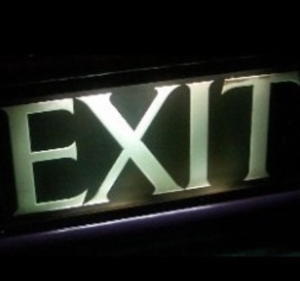Scottish Cinemas and Theatres
Lanark
Cinemas
Regal / Vogue
Bannatyne Street

Regal / Vogue
Bannatyne Street

|
Lanark’s
Regal Cinema was built opposite the railway station, in the eastern
half of the ancient Royal Burgh, on the site of an existing garage. It opened on the last day of August,
1936, with the films Manhattan
Monkey Business and The
Bohemian Girl, the latter starring Laurel and Hardy. The
opening ceremony was performed by Lord Dunglass, a title held at the
time by Alec Douglas-Home, who would later briefly serve as British
Prime Minister from 1964-65. The original manager, George Lee, stayed in the post until 1961.
Archive images courtesy of Mike Lee [Son of the original manager]
Other cinemas he worked on include the Clydebank La Scala and the Regal in Shotts, as well as alterations to the Avenue/Victory in Whiteinch. All the others bar Clydebank have been demolished, and even that has been heavily altered.
Inside the auditorium, the wide proscenium arch was framed with simple linear banding, whilst the curving splay walls were adorned with a series of slim horizontal lighting troughs with rounded ends, which got progressively longer as they decended, creating a fantastic focus on the proscenium. The screen itself was behind two sets of curtains, the outer set having a festoon arrangement. An internally illuminated clock was found on each side of the front stalls exits, one of which is still in working condition.
The front half of the main ceiling was barrel-vaulted, punctuated by shovel-shaped light fittings as well as ventilation grills decorated with a double chevron pattern. Above the balcony, the ceiling was slightly raised, with a flat, angular vault rather than a barrel-vault, with a large, rectangular grill recessed in the centre, which would presumably once have been internally illuminated.
Despite the inevitable takeover by bingo in the 1970s, the Vogue, as it was then known, retained its rather elderly projection equipment, and still showed occasional films right up until the late 1980s. The last film is said to have been Robin Hood: Prince of Thieves in 1987, and this is borne out by the fact that much of the decaying print still sits in a jumbled pile on the projection booth floor – perhaps evidence of the antiquity of the (still in situ) projection equipment by that stage! The alterations for bingo were minor, with the front stalls seating being replaced with tables, and a new office and sales kiosk erected in the rear stalls.
 Many thanks to manager Martin Carroll for his time and enthusiasm when
showing us around the building.
 Picture House / Rio Castlegate  Part of Ormiston Circuit. s. 800. Sold to Gaumont, 3.28. Sold to independent, c. 1933. Ranamed Rio, c.1945. Cl. 6.60, gutted by fire. Demolsihed for Supermarket. Picture courtesy of Bruce Peter. Lanark Memorial Hall  Used for film shows in the 1990s, but these were not a success. Selection of interior photos below courtesy Norrie Mcnamee.
|
Unless otherwise
specified, all photographs and other material copyright (c) 2001
- 2020 Gordon Barr and Gary Painter.
All rights reserved. Permission for use elsewhere normally granted, but please ask first!
No attempt is made to infringe any existing copyrights or trademarks. Please contact the editors in case of any queries.
All rights reserved. Permission for use elsewhere normally granted, but please ask first!
No attempt is made to infringe any existing copyrights or trademarks. Please contact the editors in case of any queries.




























